There’s a lot to get your head around in Rogue Universe, and its futuristic spacey interface isn’t necessarily the most welcoming to newcomers.
That’s why we’ve put together this handy reference guide to help you through your first few hours in the game. Keep it by your side and you’ll be dominating the galaxies in no time.
Mothership
Your mothership is the engine room of your whole operation – and it literally has an engine room. You can think of it like your city in Clash of Clans.
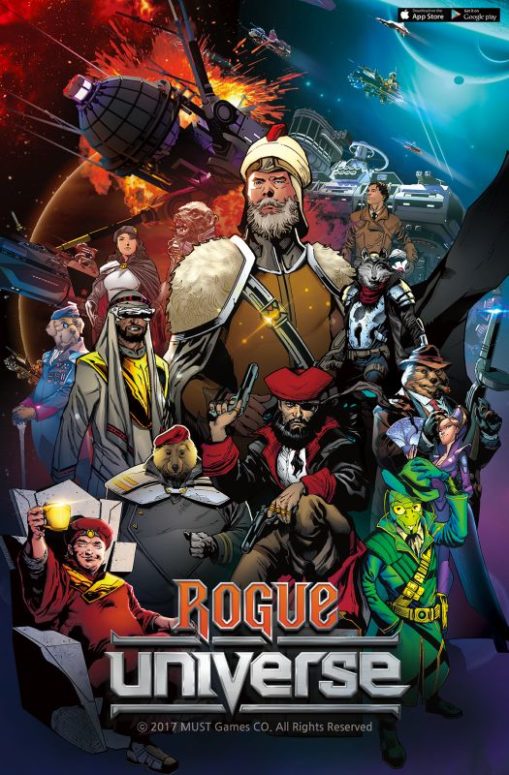
The difference is that all of the “buildings” are available from the very beginning, and they’re called modules. There are six in total, including…
– a Command Post (reinforcing this increases your refill speeds),
– a Dock (reinforcing this increases your capacity),
– a Barracks (reinforcing this increases the number of crew you can have),
– a Reception (reinforcing this increases your number of ambassador slots, in turn making you better at diplomacy and trade),
– a Lab (reinforcing this allows you to research more stuff),
– and an Engine (vroom).
Reinforcing is just another way of saying levelling-up. The trick with your mothership is that you need to keep reinforcing all of its modules, since you can only reinforce each one if the others are up to a certain level too.
You can review your modules by tapping on the M.ship symbol on the menu at the bottom of the screen and then on the little Modules icon that appears on the ring encircling your ship.
Reinforcing a module takes time, and so does more or less everything else we’re going to write about in this guide. A lot of Rogue Universe is waiting for timers to finish. You can expedite these by using time reduction cards and/or spending gems.
Ships & Crews
Ships and crews are the principal assets. After all, you can’t take over the universe without several fleets of craft and people to fly them. It’s plain common sense.
Ships can be constructed, reinforced (levelled-up), stabilized (repaired), and, if you don’t want them any more, dismantled for parts.
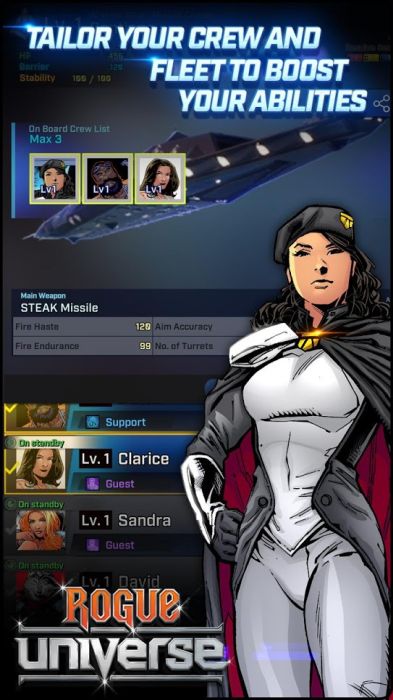
You have a certain number of available slots for construction and reinforcements. You start with one, but more become available as you progress through the game and increase your Honor level, allowing you to construct and reinforce multiple ships at the same time.
You can build up a pretty vast fleet of ships, but there are only four basic types. Arsenal ships are your tanks, floating like a sloth but stinging like a rhinoceros, to paraphrase Muhammed Ali. Main ships are much more balanced, while Torpedo Bombers are fast but vulnerable. Finally, Utility Ships are not much cop in a dogfight but useful for collecting resources.
As you have no doubt already worked out, it’s a good idea to tailor your fleet to the mission at hand.
Your Crew works in much the same way. You can recruit, train, board, and release your crew. There are three different types of crew member – Combatant, Support, and Guest – each with their own set of four skills to choose from. As well as choosing their skills you can set their salaries, with higher pay packets equating to longer timers but better performance in the field.
Training is like reinforcement – basically, it’s how you level-up your personnel.
Research
There are six available fields of research: Mothership, Main ship, Arsenal ship, Torpedo Bomber, and Utility ship. In each of them you need to work your way down a branching skill tree, with each layer unlocking the next.
To give you one small example, halfway down the Utility Ship skill tree you can research Speed Up Construction. After that, assuming you meet all the other criteria in terms of resources and mothership module levels, you can choose between Reduce Construction Time and Reduce Construction Costs, giving you some control over how you progress.
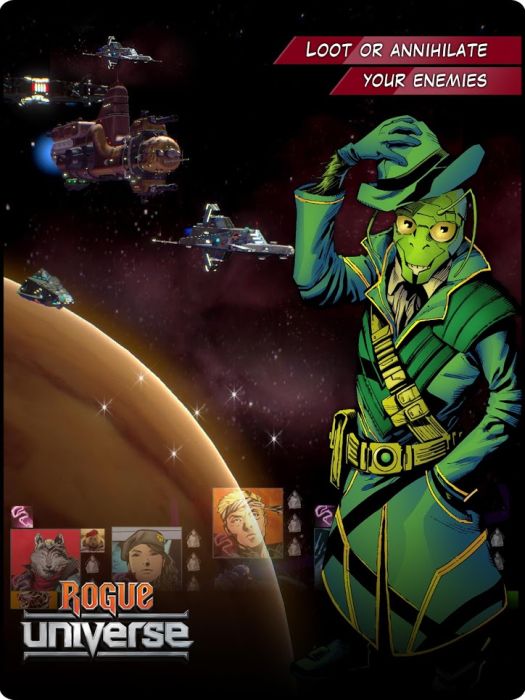
Scramble
Look down. Now look right. See that button that says Scramble? Press it.
This is a handy springboard from which to launch attacks on NPCs, complete missions, assault other players, and carry out Deep Strikes. We’re going to ignore the last two, however, since they’re slightly more advanced.
To attack an NPC, just tap – you guessed it – Attack NPCs. This will bring up a list of the NPCs in range, as well as their levels. Tap on the NPC you want to attack, and then Attack. This takes you to a page where you can choose a fleet to attack with.
It’s possible to modify your fleets before the battle by tapping Ship Change, but if you want to keep things simple you can just press Auto Scramble to have the game pick a fleet for you.
Note, you can also launch attacks from the main 3D interface, by navigating around the globe your mothership is hovering over with your finger. This is better in some ways, since it lets you view your quarry before pouncing.
Either way, you can attack as many NPCs simultaneously as you have available fleets to attack them with.
Missions work in much the same way. There’s a variety to browse, from analyzing ruins to reclaiming space stations. Many are peaceful, though some are violent, and you can repeat missions once you’ve completed them.
By the way, if you look to the left of the main screen you’ll see a little yellow tab. This is your Task Progress tab, and it saves you from dipping into several different menus to complete tasks. It gives you a rundown of every process that’s currently underway, and allows you to confirm the completed ones with a single tap. Neat!
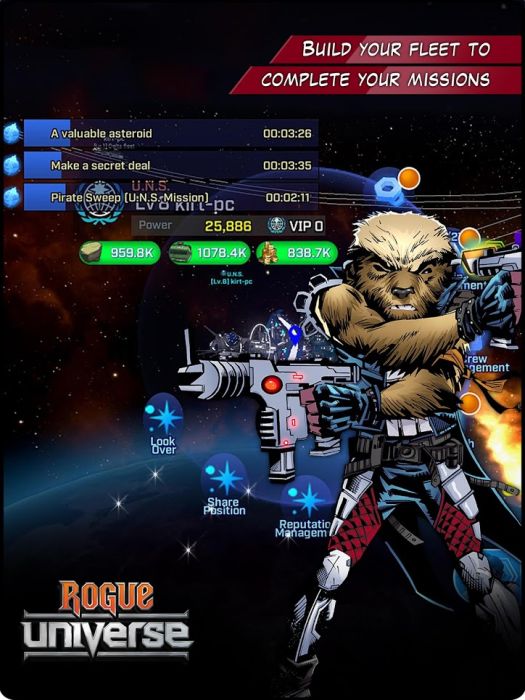
Journey
Rogue Universe’s story campaign takes the form of a series of journeys, each of which is a cluster of tasks. If you’ve ever played a mobile RPG you’ll be familiar with this campaign structure – it’s just a clever way of making sure you make sensible choices in terms of what you manufacture, reinforce, and so on.
The key is that these journeys are to an extent optional. If you don’t want to just work your way through a succession of instructions you can break off and play by yourself, attacking NPCs, researching stuff, and generally acting under your own steam.
This is actually quite a good idea, since it means you’ve often completed journey tasks before they’re even presented to you, like an intergalactic teacher’s pet.
After completing each task and journey you’ll be rewarded with various items and currencies. Let’s take a quick look at those.
Items, Resources, and Currencies
Everything you do in Rogue Universe either costs or yields something, whether that be currency, single use items, or points. Here’s a brief, incomplete overview of the main ones you’ll encounter in your early days.
– Fuel – you get this by completing tasks and spend it on construction, research, reinforcement, and more.
– Material – in practice very similar to Fuel.
– Coins – along with Fuel and Material, essential for the vast majority of processes in Rogue Universe.
– Reputation – there are three different types of Reputation – Black Flag, Zurich Bank, and UNS. You can spend the Reputation points on earn in the Reputation shop, which you can find behind the M.ship tab.
– Time reduction cards – everything is on a timer, and time reduction cards are one of the two ways you can reduce these timers. They come along frequently, though you should still try and save them for a rainy day.
– Gems – the other way you can speed up timers.
– Honor points – you get these for completing missions and attacking NPCs, among other things. They’re sort of like your character level, and you need to reach certain Honor levels to unlock stuff like extra slots for construction, reinforcement, and training.
– Blueprints – you need Blueprints in order to construct new kinds of ship. You earn them primarily by completing journeys.
These things come to you in a variety of ways, and one easily overlooked way is through achievements and Daily Quests. Look out for the red notification on the little book icon on the bottom right of the main screen.
There’s a ton of stuff to do in Rogue Universe, and it can be daunting at first, but as long as you make sure your production, research, recruitment, and reinforcement people are working overtime you’ll always be moving in the right direction.
If you haven’t done so already, you can download Rogue Universe from the App Store and Google Play now.

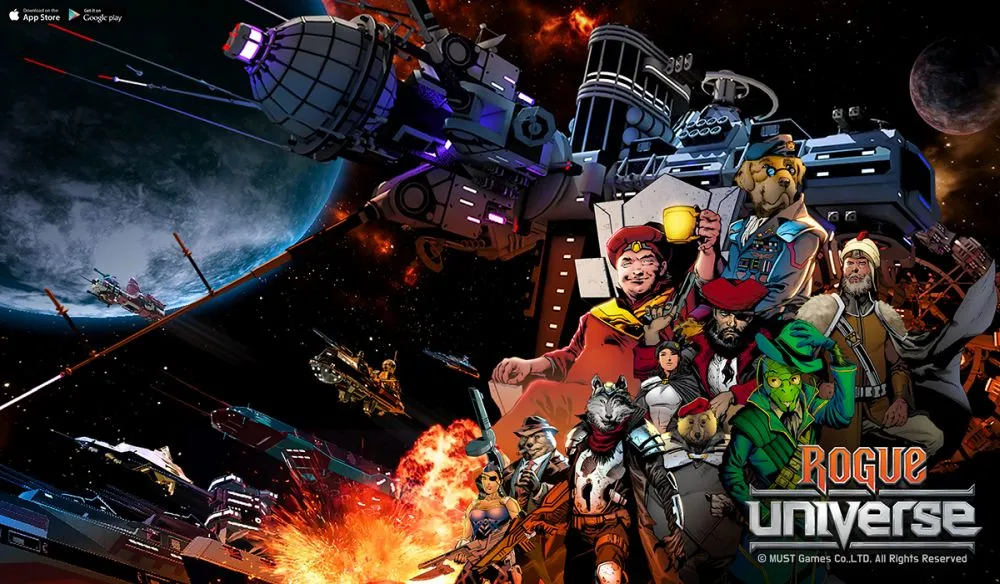


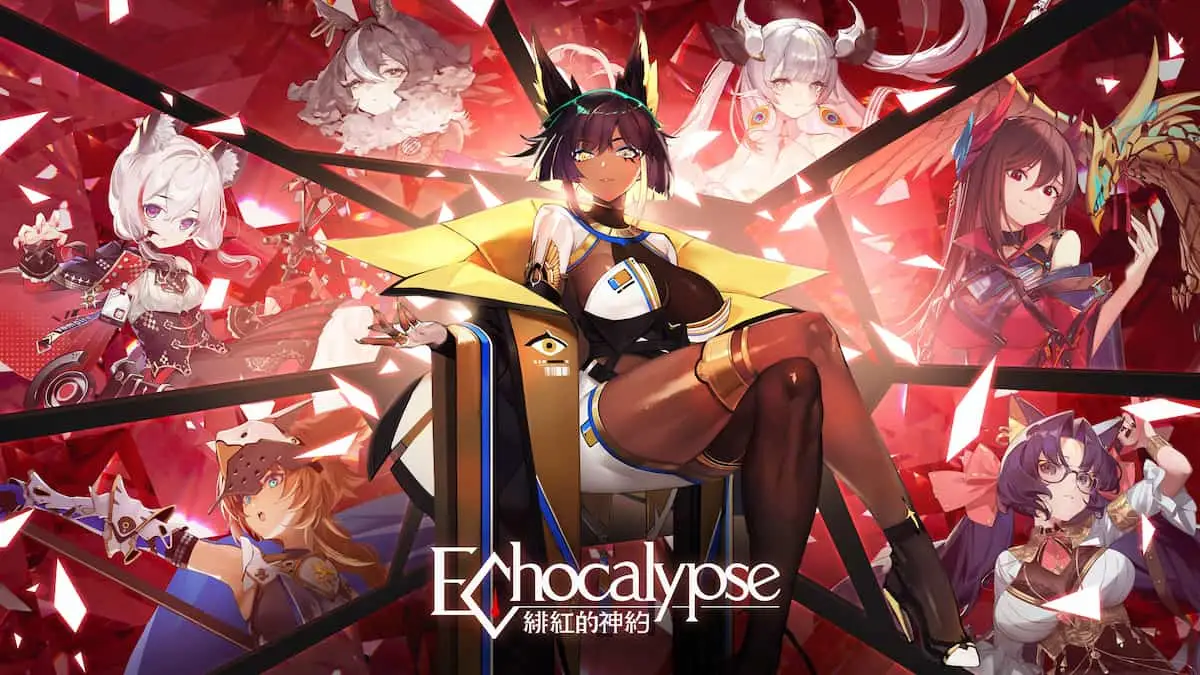
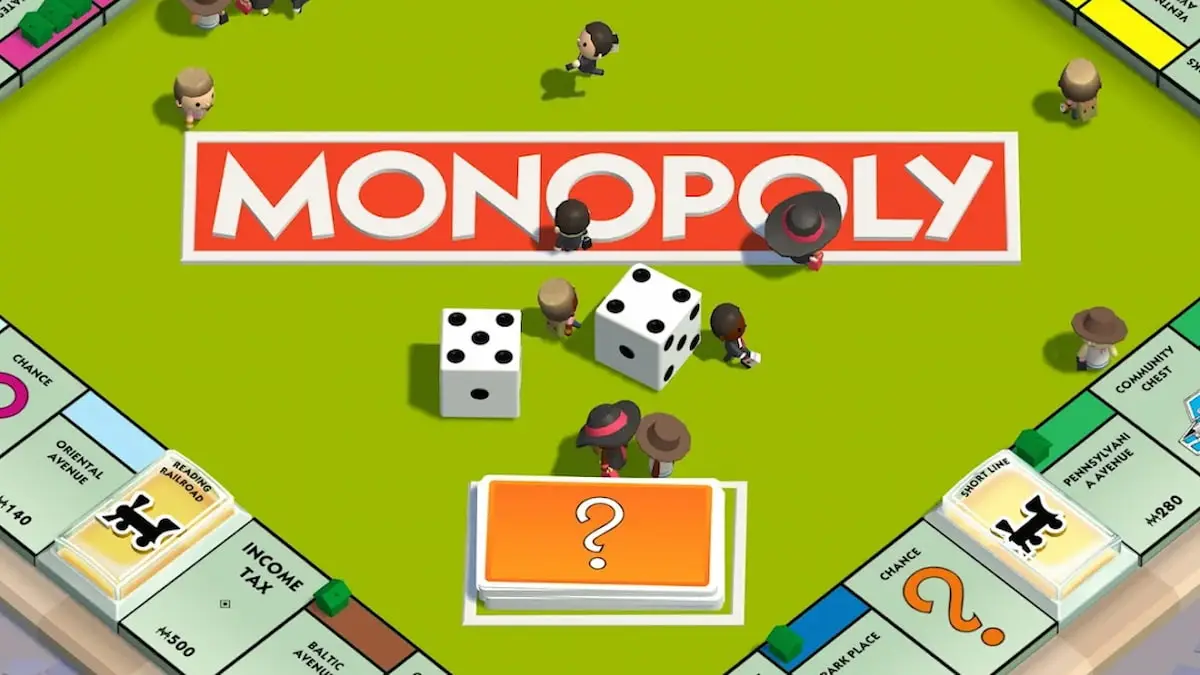
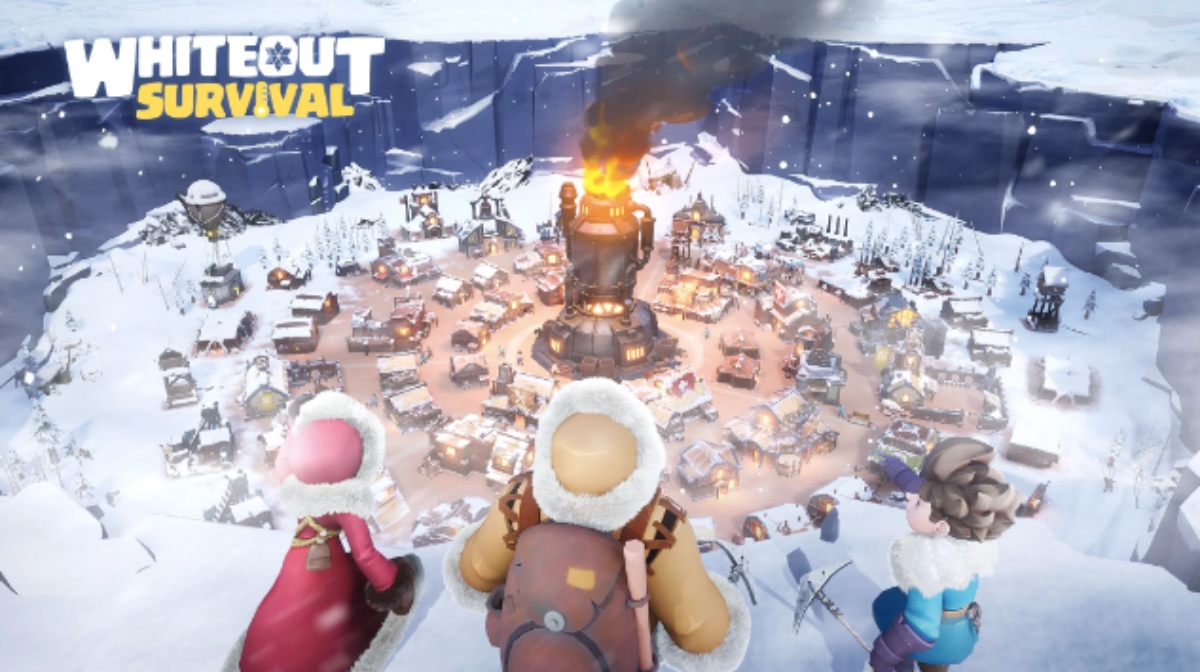
Published: Jan 31, 2019 11:30 am